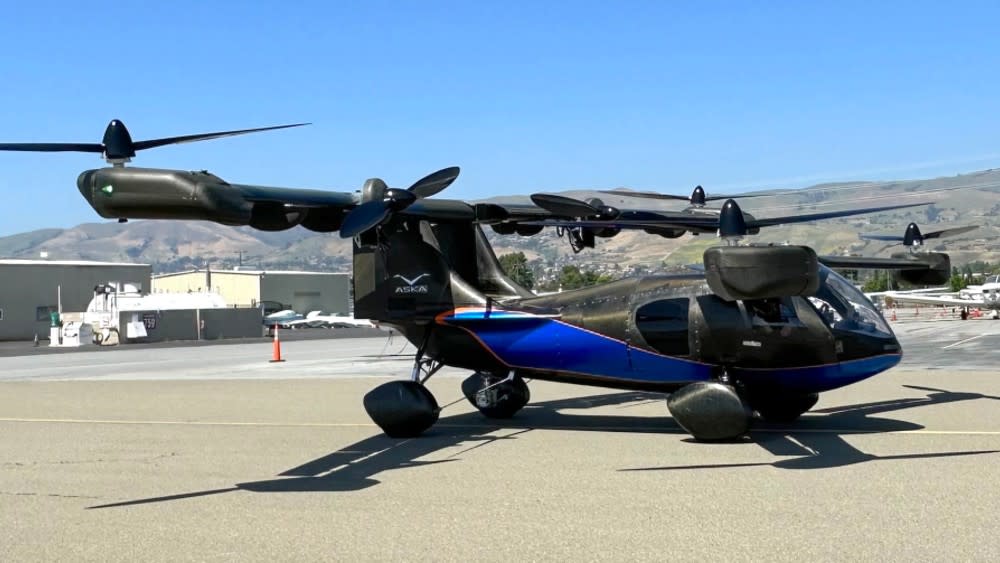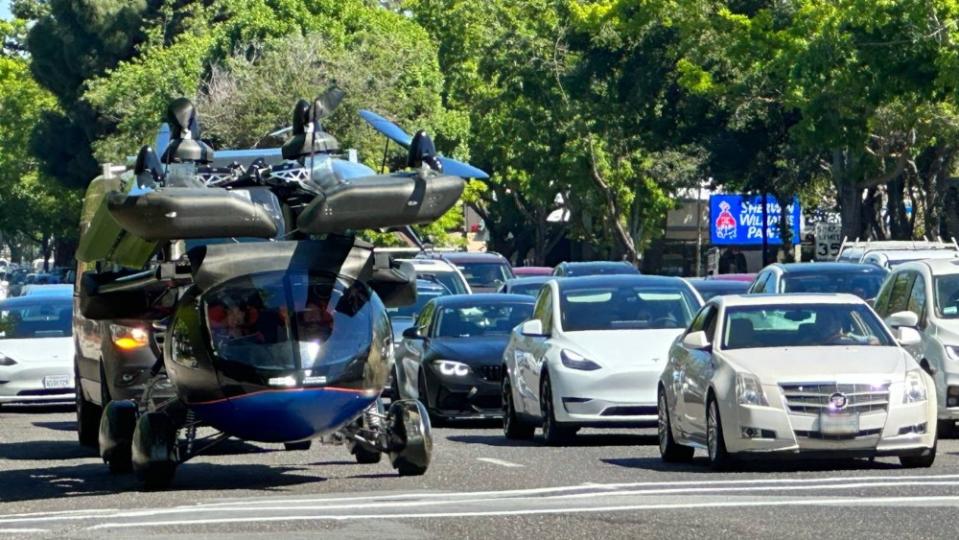ASKA’s Flying Car Is the Second to Get Cleared for Flight in a Week

California start-up Aska says the FAA has issued its A5 flying car a Certificate of Authorization and Special Airworthiness Certification. The company started ground testing last year and in the first quarter of this year started on-street driving tests.
“We’ve been working on the aircraft for more than five years,” Maki Kaplinsky, who launched the company with her husband, Guy, tells Robb Report. “We completed our first working prototype last December and have already started flight tests.” The company is based in Palo Alto and conducts its tests on several airfields in the San Francisco Bay area.
More from Robb Report
These 5 eVTOLs Let You Take to the Skies Without a Pilot's License
This New Personal eVTOL Will Have You Zooming Through the Air After 10 Minutes of Training

The four-seat A5 is the same size as an SUV and is designed to be self-operated, either as an air taxi or privately operated vehicle. It has a dual hybrid energy system comprised of batteries and a “range-extender” gas engine to charge the batteries while in flight. The six independent motors operate the eVTOL in flight, with an airspeed up to 150 mph. Its maximum flight range is 150 miles, and it’s capable of vertical takeoff and landing as well as short takeoff and landing on runways.
The A5 has been undergoing vertical takeoff and landing testing and with the airworthiness certificate will now start flying in “transition and cruise mode,” says Maki.
Type certification signifies the design complies with applicable airworthiness, noise, fuel venting, and exhaust emissions standards. “The data we are harvesting from flight testing is enabling us to make progress towards our type certification,” Guy says. “We already completed the initial phase and are progressing towards our next milestone, G1 status.”

Aska designed the flying car, in part, because it won’t be dependent on airport infrastructure like other electric aircraft. “It can maximize the use of today’s infrastructure, such as the many charging stations located around us,” says Maki. “The A5 also drives into the airfield as a car, drives/taxis to the helipad or runway, transforms into the flight mode and can take off.”
The company expects the A5 to enter the commercial market in 2026 and has already secured $50 million in pre-orders. But it’s not the only flying-car contender: The Armada from Alef Aeronautics also recently received an FAA Special Airworthiness Certificate.
Best of Robb Report
Sign up for Robb Report's Newsletter. For the latest news, follow us on Facebook, Twitter, and Instagram.


